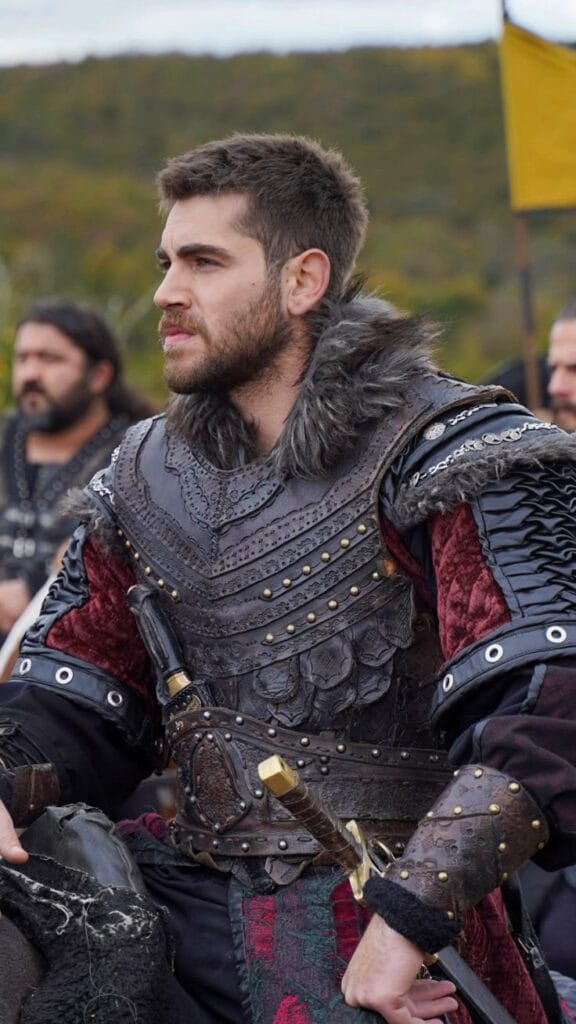Orhan Bey biography



Orhan Bey (Orhan Gazi) was the second ruler of the early Ottoman state and the son of Osman Bey. He turned a growing frontier beylik into a real state with a capital, coins, schools, and steady rule. Under Orhan, the Ottomans took key cities in north-west Anatolia and stepped into Europe for the first time.
Who was Orhan Bey?
Born: c. 1281 (date varies in sources)
Reign: 1324/1326–1362 (different sources use 1324 or 1326 as the start)
Died: 1362, Bursa
Parents: Osman Bey and most sources list Malhun (Mal) Hatun as his mother
Capital: Bursa
Orhan took over after Osman and continued the expansion against weakening Byzantine rule in Bithynia (north-west Anatolia).
Early life and family
Orhan grew up in a border region where many peoples lived side by side—Turks, Byzantines, dervishes, traders. This mix shaped his style: patient, practical, and open to alliances.
Spouses often listed in sources:
Nilüfer Hatun (also known as Holofira in later stories)
Theodora Kantakouzene (political alliance through marriage)
Asporça Hatun (linked to Byzantine nobility in some accounts)
Children (well-known):
Murad I (Murad Hüdavendigar) — succeeded Orhan in 1362
Süleyman Pasha — led early moves toward the Balkans, died 1357
Other children are listed in different sources, but details vary.
Key achievements
1326 — Bursa captured
Bursa became the new capital and the heart of the state. Orhan invested in markets, mosques, baths, and public kitchens so the city could grow fast.
1331 — İznik (Nicaea) taken
This was a major cultural center. Orhan turned the city’s scholarly tradition to the state’s benefit. The first Ottoman madrasa is often connected to İznik in this period.
1337 — İzmit (Nicomedia) secured
With Bursa–İznik–İzmit under control, the Ottomans held the main corridor along the Marmara’s eastern rim.
1352–1354 — First foothold in Europe
After regional conflicts and an earthquake that weakened city walls, Ottoman forces under Süleyman Pasha settled in Gallipoli (Gelibolu). This step opened the door to future moves in the Balkans.
State building under Orhan
The akçe (silver coin): Orhan issued regular silver coins. Coins and Friday khutba in the ruler’s name are classic signs of sovereignty.
Early standing forces: He organized yaya (infantry) and müsellem (support/auxiliary) units to reduce reliance on only tribal levies. (The famous Janissary corps came later under Murad I.)
Education & waqfs: Orhan supported madrasas, dervish lodges, bridges, and public kitchens through charitable endowments, which helped integrate new cities.
Administration: Judges and officials were appointed in the new towns, showing a shift from a loose frontier band to a functioning state.
Diplomacy and alliances
Orhan used marriage diplomacy and treaties to avoid fighting on all fronts. Ties with Byzantine nobles helped him secure routes and buy time while he rebuilt newly captured cities. This calm, step-by-step approach made later conquests possible.
Death and tomb
Orhan died in 1362. His tomb (Orhan Gazi Türbesi) is in Bursa’s Tophane area, close to the tomb of his father Osman Gazi. The site is open to visitors and is a key stop for anyone tracing early Ottoman history.
Orhan in popular culture
In historical dramas related to Diriliş: Ertuğrul and Kuruluş: Osman, Orhan appears as the bridge between the founding generation and the rising empire. Newer seasons/productions often use a time-jump to focus on his youth and rise.
Why Orhan matters
He finished what Osman started: secure cities, clear tax systems, and stable rule.
He gave the Ottomans a capital (Bursa) and an identity people could rally around.
He made the first step into Europe, which shaped Ottoman history for centuries.
Quick facts
Name: Orhan (Orhan Gazi)
Born: c. 1281
Reign: 1324/26–1362
Capital: Bursa
Known for: Bursa–İznik–İzmit conquests; first European foothold at Gallipoli; silver akçe; early yaya/müsellem forces; support for madrasas
Successor: Murad I
Burial: Bursa (Tophane)
FAQ’s
How many wives did Orhan Bey have?
Sources differ. Most reliable lists mention two to three wives—commonly Nilüfer (Holofira) Hatun, Theodora Kantakouzene, and Asporça Hatun. Medieval records are thin, so exact numbers vary by author.
Who is Orhan Gazi’s first wife?
Many modern summaries name Nilüfer (Holofira) Hatun as the first wife, but early sources don’t agree perfectly. Treat “first” as uncertain, with Nilüfer most commonly mentioned.
How did Orhan marry Holofira?
Later tradition says Holofira was a Byzantine noblewoman connected to a local fortress. After Ottoman success in the region, she married Orhan and became known as Nilüfer Hatun, mother of Murad I. Details differ across chronicles, so consider it traditional narrative, not a fully documented event.
Who is Orhan Bey in Kuruluş: Osman?
He is Osman Bey’s son and the ruler who turns the beylik into a state—capturing Bursa, İznik, İzmit and opening the way to Gallipoli. Different seasons show him from youth to leadership, depending on the time jump.
Why did Orhan marry Theodora?
It was a political alliance. Theodora was linked to the Byzantine imperial family (Kantakouzenos). Marrying her helped stabilize relations and trade routes while Orhan consolidated new cities.
Where is Orhan’s first wife?
If by “first” you mean Nilüfer (Holofira) Hatun, most accounts place her burial in Bursa. There is also a memorial complex in İznik called the Nilüfer Hatun İmareti, built in her honor by Murad I.
Did Orhan marry Elcim Hatun?
There is no strong historical evidence for a wife named Elcim (Elçim) Hatun. The name likely comes from drama/fiction or confusion with other figures listed in later sources.

